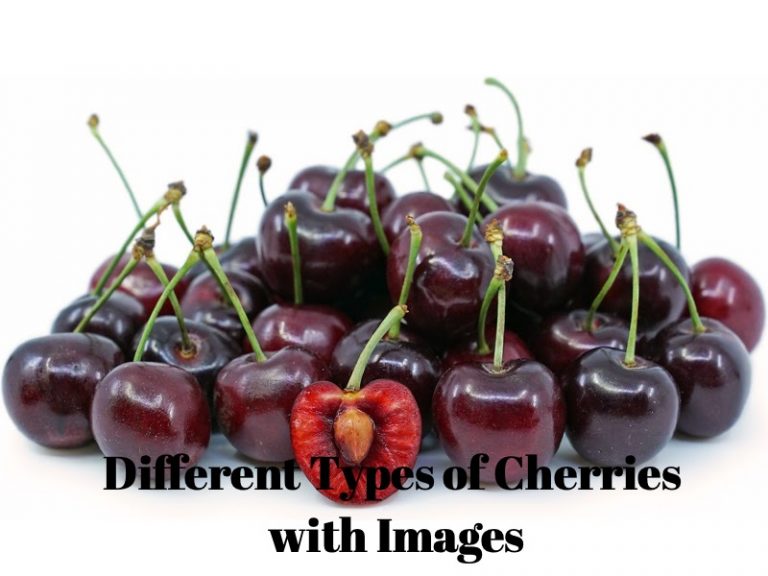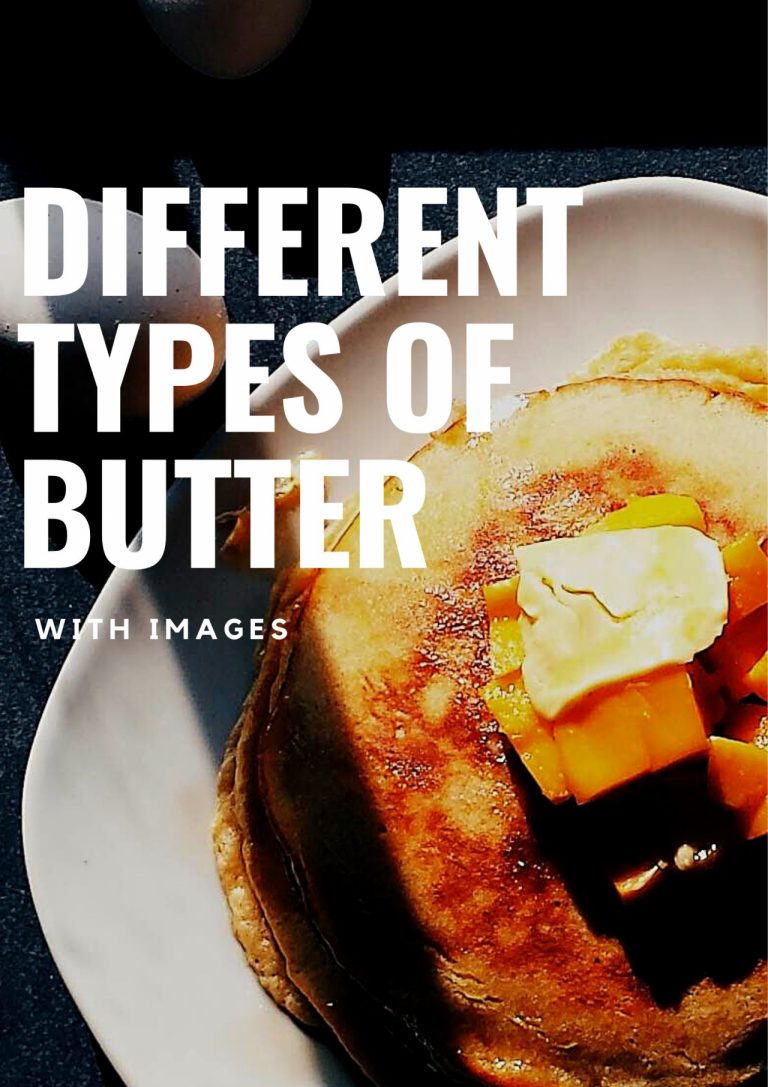Shabu Shabu vs Hot Pot, What Is The Difference?

Foodies know for sure the difference between shabu shabu and hot pot. However, if you are not familiar with these meals, it’s easy to get confused, and deciding which type of meal to choose can be difficult.
Shabu Shabu vs Hot Pot

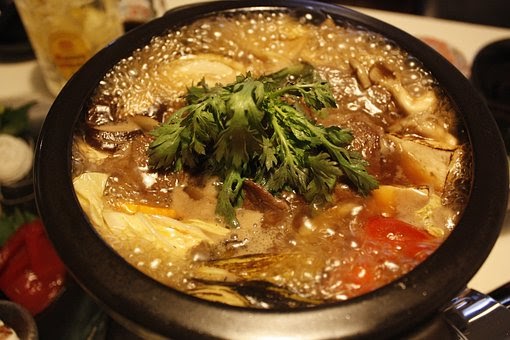
Shabu shabu originated in Osaka, Japan and was introduced around 1952. The word means “swish swish” in Japanese. Hot pot, on the other hand, has a very long history, dating back to 1046 – 256 B.C. in Zhou Dynasty China.
The two meals greatly differ in many aspects including their preparation, cooking and flavor. We will discuss them in this guide.
Similarities
Hot pot and shabu shabu are two popular dishes that use broth for cooking the ingredients. Hot pot or hotpot is a cooking method that originated in China, whereas shabu shabu is a staple in Japanese cuisine.
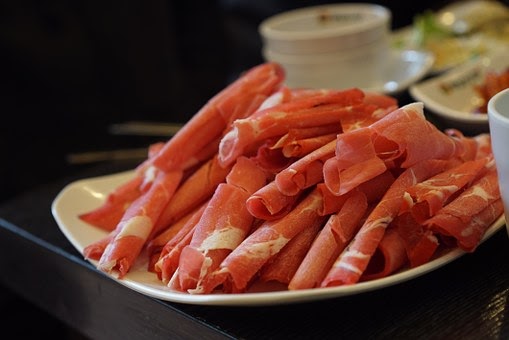
The term “shabu shabu” is a Japanese onomatopoeia from the sound swish-swish which is the sound you’ll hear when stirring the ingredients in the boiling water while cooking.
While the two dishes differ in many areas, they also share some similarities:
Ingredients
The two dishes use broth to cook the meat and vegetables. So broth is the vital component of these dishes.
Another similarity is the use of paper-thin slices of meat. The most popular options for meat include beef and pork. Some shabu shabu or hot pot also use seafood, chicken and other types of meat.
Both dishes also use vegetables such as broccoli, napa cabbage, mustard green, carrot, long green onion and different varieties of mushrooms.
Of course, you can easily customize the ingredients. From a decadent meal that includes a selection of premium beef and seafood to a healthier spread full of fresh produce. So the flavors are customizable, depending on the ingredients.
Dipping sauce
Also, hot pot and shabu shabu dishes normally come with a wide variety of sauces such as sesame sauce and ponzu sauce among others.

Cooking method
Moreover, both dishes are cooked on top of the dining table. So you’ll need a portable stove or gas burner to cook.
Besides the delicious tastes of these two dishes, they are both a great way to socialize. You can gather with your friends or family around a hot pot or shabu shabu, chatting and drinking while you cook.
Eating hot pot or shabu shabu is perfect during winter time. They can warm the body and help improve your circulation.
You can enjoy both dishes at your favorite Chinese restaurant (for hot pot) and Japanese restaurant (for shabu shabu), or you can cook them at home.
Differences
Comparing the Japanese shabu shabu and Chinese hot pot, you can tell that each dish is very unique in terms of the complexity and richness of flavor.
Preparation

Hot pot
There are many variations of hot pot dishes throughout the different regions of China. They differ in the broth and the meats used in the dish. But more often, the meat is not cooked or included in the broth.
In Northern China, thinly sliced lamb is a common choice for meat instead of beef. Another variation which is the Cantonese style is heavy on seafood including squid, oysters and shrimps. On the other hand, you may have also heard of Mongolian-style hot pot which is cooked with a mix of herbs and ingredients such as jujubes and goji berries. And for those who love eating spicy food, the Chongqing hot pot is a popular choice because of its use of various mouth-numbing ingredients such as the Sichuan peppercorn.
Aside from the hot pots in China, there are also variations outside the country such as the Thai hot pots and Japanese hot pots.
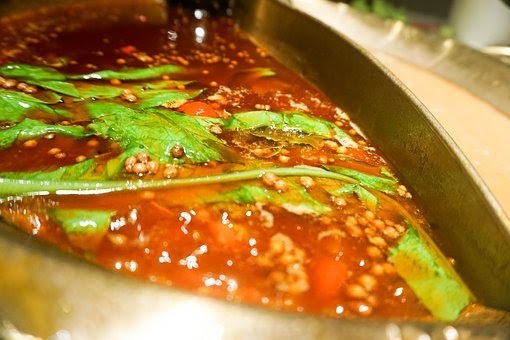
Home cooking a Chinese hot pot dish is easy as long as you have the right equipment. First, you will need a portable gas burner because all cooking will be done on top of your dining table. Aside from the burner, you also need a large pot for the broth and a serving platter.
Once you have the equipment, make sure that you have all the ingredients you need. When it comes to picking the ingredients, variation is key so you can enjoy a bit of everything.
Beef is a popular choice for meat, although some also use chicken or pork and add a variety of seafood such as fish, shrimp and squid. Lightly cook the meat into the broth befe dipping it into the sauce.
For the vegetables, you could add leafy greens, cut napa cabbages, root crops such as potatoes, daikon, mushrooms, tofu, smaller chunks of squash and other vegetables of your choice. Of course, don’t forget the frozen udon noodles.
To get started, you need to prepare the broth and add your favorite soup base. Fortunately, there’s a wide variety of ready-to-use soups bases for the hot pot broth and you can get them at your favorite supermarket. Once the broth is ready, you’ll know that it’s fun time!
Typically, a hot pot meal ends with cooking udon noodles. Put the udon noodles in the boiling broth according to its cooking instructions, then transfer them to iced water to stop cooking. Eating udon is a great way to end the meal.
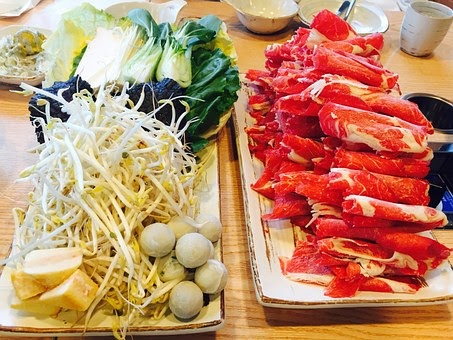
Shabu shabu
The boiling broth or dashi is one of the major components of a Japanese shabu shabu dish. It is prepared using kombu seaweed. Noodles, tofu, and vegetables are also added to achieve a more flavorful broth.
Some of the commonly used vegetables for shabu shabu are broccoli, Chinese cabbage, mustard greens, carrots, green onions, bok choy, cabbages, and mushrooms. For authentic flavor and more umami taste, opt for shiitake mushrooms, enoki mushrooms or shimeji mushrooms.
To complete the swish swish dish, thinly sliced beef, pork or other types of meat are added to the hot broth. Thinly sliced meats cook quickly so you just have a short waiting time. Once the meat is cooked, you can then dip it into your favorite sesame sauce or other dipping sauces.
The traditional shabu shabu food recipe uses the standard cut of Japanese beef. However, there are regional variations that use different types of meat:
- Wakame no shabu shabu – this shabu shabu comes from the Tohoku region. It is cooked with pork.
- Buri shabu shabu- this shabu shabu from Toyama prefecture uses fresh yellowtail, mochi and yuzu.
- Hamo shabu shabu – a popular shabu shabu in the Kansai region, this dish is cooked with angelica root, pike peel, and various Japanese flowers.
- Tako shabu shabu- From the Hokkaido prefecture, this shabu shabu iw cooked with octupus.
- Tori shabu shabu – Cooked with slivers of chicken, this shabu shabu is popular in Nagoya
- Kurobuta shabu shabu – this shabu shabu from Kagoshima Prefecture is cooked with pork belly from the Kurobuta breed.
Just like preparing a Chinese hot pot, you’ll also need a large cooking pot to enjoy shabu shabu. You can start by filling the pot with water, about two-thirds full. You can then add dried kelp of kombu and then bring to a boil.
You can prepare the dipping sauce while waiting for the broth to boil. Once boiling, you can slowly add the ingredients you want to eat. Don’t forget to to dip in in your favorite dipping sauce before eating.
Hot pot and shabu-shabu are enjoyed like fondue. You will have to add and cook the ingredients gradually during the meal. And since there different ingredients involved, it’s important to understand that they vary in cooking time. That is why it’s recommended to add one or two ingredients at a time as opposed to adding them all together.
After removing the meat and other foods in the broth, dip them into the different sauces and enjoy!
Sauces
Dipping sauces are integral to the two dishes. That’s why you shouldn’t be surprised to see a wide variety of dipping sauces alongside your favorite hot pot or shabu shabu dish.
Hot pot
For hot pot, the selection of sauces can be from sweet to spicy and everything in between. There is no hard and fast rule when it comes to the sauce so you can always mix and match. You can try citrus soy sauce and other popular combinations such as:
- shacha and sesame oil
- rice vinegar, soy sauce and garlic
- coriander, sesame oil and paste
Shabu shabu
The traditional sauces for Japanese shabu shabu include a ponzu sauce which is a Japanese citrus sauce, and sesame sauce. But there are many more combinations you could try such as:
- honey, lime juice and soy sauce
- soy sauce, sambal, sesame oil and chiracha
- sesame paste, soy sauce and vinegar
- Sesame sauce and lime
You can always adjust the ingredients depending on your preference. For instance, if you want it sweeter, you can add more honey and if you want spicier, you can add more chillis for an added kick.
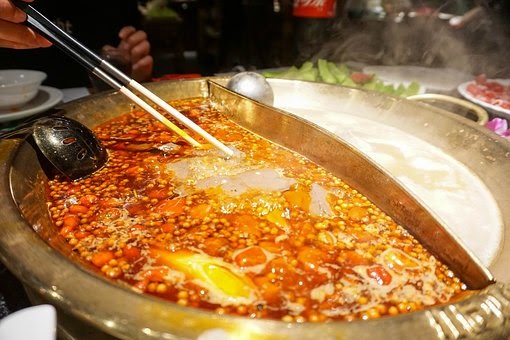
Flavor
Chinese hot pots differ in flavor, depending on the variation of the dish. Sichuan hotpots are known for their numbing spicy taste. Other variations may not be as spicy but they have a rich flavor. You could also taste a hint of sourness, saltiness and sweetness. Generally, these hot pots have an earthy flavor and full of aromatics.
It is worth mentioning that there are also Japanese hot pots or nabemono. Try a Japanese hot pot if you prefer the more natural flavors of meat (from rare to medium rare) and vegetables.
Shabu shabu, on the other hand, has a lighter flavor compared with hot pots. However, you could always customize or enhance the taste of the meat and vegetables with the sauce.
Summary
Hot pot and shabu shabu are great dishes worth trying if you want something Asian. They are considered as social meal, best shared with your family or friends. The best thing about these two dishes is that there is no hard-and-fast rule when it comes to the ingredients to use.
As these dishes are more communal, it’s important to respect the commons. Sharing is key to enjoying the meal. But of course, there are also important etiquettes you need to observe, and one of the most important things to remember is to observe no double-dipping.
